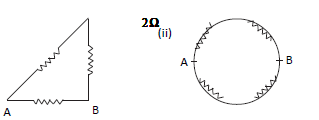The Rajasthan Board Class 10 Science Important Questions give an overview of the major topics and concepts under RBSE Class 10 Science to the students. A lot of students feel that Science is a complex subject with formulas and derivations. It requires a lot of practice solving questions if students want to ace this subject. These important questions prepared as per the Class 10 syllabus can help students gain more confidence. It gets better with practice. If students solve more papers, they are more likely to understand the concepts more easily.
The questions compiled here have been drawn up after analysing the questions from Rajasthan Board Class 10 Previous Year Papers. We have taken the most important questions, those of which are liable to be repeated for the upcoming boards. These questions will also give the students an idea about the types of questions asked, and this helps them to prepare for the exams better. Meanwhile, take a look at the important questions of Class 10 Science, which we have compiled here:
Download Rajasthan Board Class 10 Science Important Questions PDF
1) Deficiency of which vitamin causes the bending of the leones of legs and the knees coming closer?
2) Draw symbolic sing of electric cell and rheostat.
3) Write the blood group of a person whose genotype is ii.
4) Write the definition of “Biodiversity”.
5) Write General formula of the alkyne series.
6) Write joule units in one kilowatt-hour (1 kWh).
7) How many hotspots of biodiversity are there in the world?
8) Write two isotopes of chlorine.
9) Write the name of Parasite which causes Malaria disease.
10) Write the name of the reproductive process in plants which have lost the capacity to produce seeds.
11) The magnetic field in a given region is uniform. Draw a diagram to represent it.
12) Give the number of periods and groups in the Modern Periodic Table.
13) What two precautions should be taken to avoid the overloading of domestic electric circuits?
14) What is the ability of the eye lens to adjust its focal length called?
15) Explain the harmful effects of the use of tobacco, alcohol and opium on human health giving two examples each.
16) What are dispersive powers? Describe any two internal dispersive power.
17) Describe Big Bang theory of the generation of the universe.
18) What is a fossil? Write the name of two vestigial organs found in the human body.
19) Write any one difference between the following:
(a) Positive and Negative catalyst.
(b) Thermolysis and Electrolysis.
(c) Addition and Replacement reaction.
20) In the given ray diagram write the value of angle of incidence and name of refracted
ray.

21) Write four characteristics of a good source of energy.
22) Why do we have two eyes for vision and not just one? Explain the fact on the basis of –
(a) Field of view
(b) Dimensional view
23) What is a redox reaction? In the reaction ZnO+C→Zn+CO which substance gets oxidised and which gets reduced?
24) What factors could lead to the rise of a new species? Explain.
25) A current of 0.25 ampere is flowing through a filament of an electric bulb for 20 min. Find the amount of electric charge that flows through the circuit.
26) Draw a linear diagram of sex determination in human beings.
27) (a) Draw a labelled diagram of neuromuscular junction.
(b) Compare nervous and hormonal mechanisms for control and coordination in animals.
28) Calculate equivalent resistance between A and B in the following Circuits.

29) Write common and botanical names of any four medicinal plants.
30) What is a reciprocal cross? Explain the phenotypic and genotypic ratio obtained in offspring, when F1 generation is crossed with Homozygous dominant parents.
31) If long plants of pea with round seeds are crossed with short plants with wrinkled seeds, which type of plants will be obtained in the first and second generations? Write the phenotypic ratio of plants obtained in the second generation (F2).
32) Draw a labelled diagram of the reflex arc and explain reflex action.
33) If an egg is not fertilized then what happens? Explain it.
34) In the reaction CuO + H 2 → Cu + H 2 O which substance gets oxidised and which gets reduced?
35) Write short notes on the following:
(a) Fragmentation (b) Regeneration (c) Budding.
36) (i) Draw a labelled diagram of the human eye. (ii) Write reasons and remedies for Myopia, Hypermetropia and Presbyopia.
37) A. (i) Write their postulates of Rutherford’s Atomic Model.
(ii) Why Rutherford’s Atomic model is known as the “Model of Solar System.”
(iii) Give two shortcomings of Rutherford Atomic Model.
B. Arrange the elements in ascending order of their metallic property
38) (i) What is the effect of hydrogen ion [H+] concentration on the nature of the solution?
(ii) When acid is diluted, acid is added in water, not water in acid. Give reason.
(iii) Name the acid present in orange and tamarind.
(iv) What is chlor-alkali process?
39) (a) Describe the components of an ecosystem.
(b) Explain stakeholders of resources.
40) (a) Write Fleming’s left-hand rule for the direction of the force on a current carrying conductor placed in a magnetic field.
(b) Draw a diagram to show lines of magnetic field inside and around a current carrying solenoid.
(c) Write the names of four devices where the current carrying conductor is used along with magnetic fields.
41) (i) The Power of a lens is the dieoptor. What will be its focal length ?
(ii) Focal length of a concave mirror is 30 c.m. If an object is placed at 15 cm. from the mirror,
then find the image position and its nature.
42) (i) Draw a labelled diagram of human excretory system.
(ii) Describe mechanism of excretion in human.
Comments